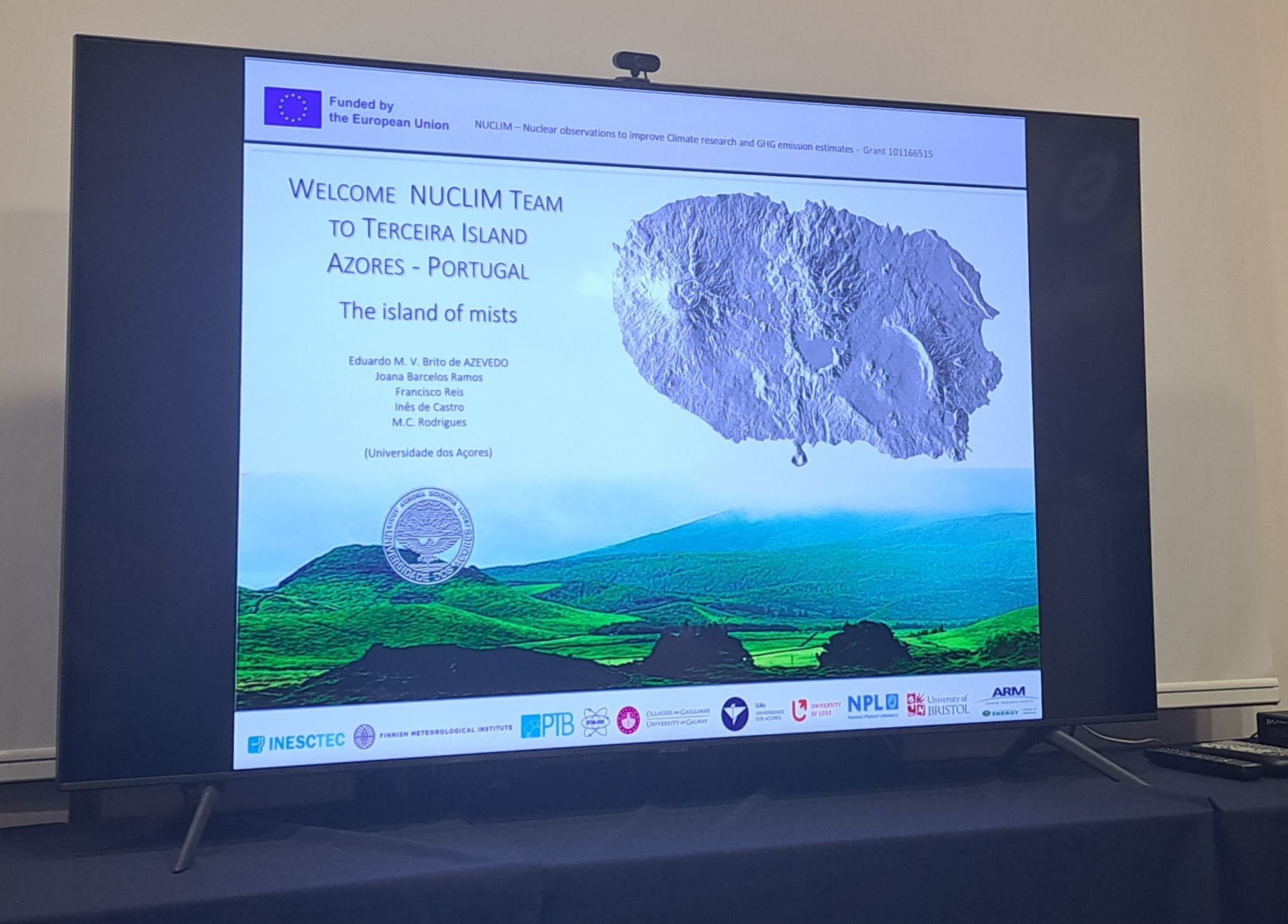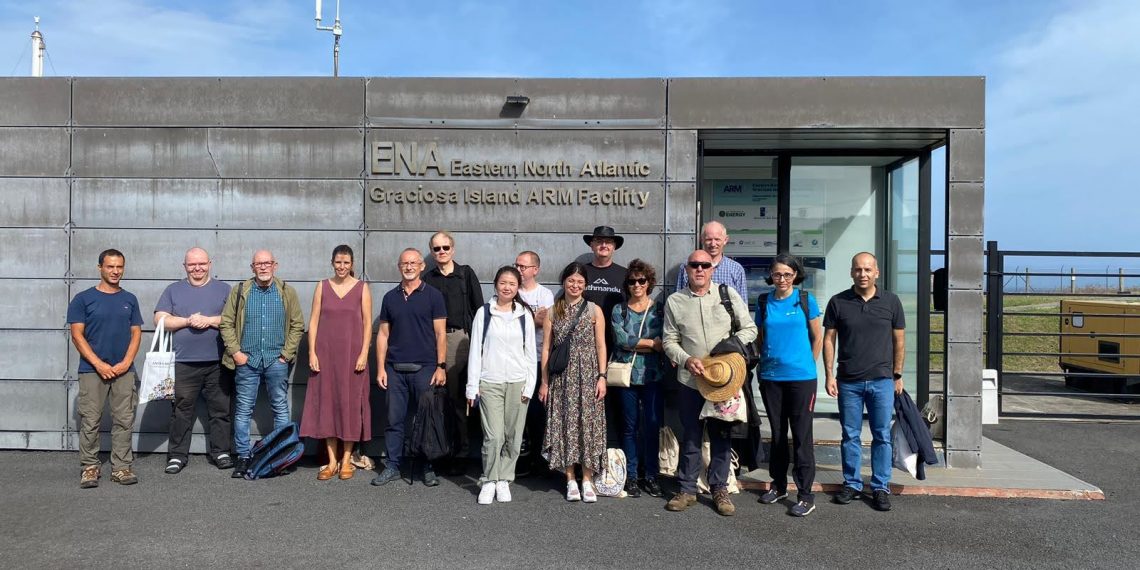For the next four years, INESC TEC will lead an international consortium with a budget of €2.6M, aimed at using advanced techniques to measure environmental radioactivity. According to estimates, by 2028, new technological solutions will be available that can improve both climate research – particularly in estimating greenhouse gas emissions – and radiological protection for the population and the environment.
It is called NUCLIM (Nuclear observations to improve Climate research and GHG emission estimates) and it brings together a consortium of eight entities that will develop a detailed environmental monitoring campaign at the ENA station, located on Graciosa Island (Azores). Researchers will be able to measure the levels of radioactivity in the atmosphere and the concentration of carbon dioxide and methane.
“These observations will be used to identify maritime air masses that are least affected by land elements, and to quantify greenhouse gas concentrations under said conditions, providing a reference level for European emissions”, explained Susana Barbosa, INESC TEC researcher and project coordinator
The challenges and Portuguese pioneering spirit
“Measuring radon gas in ocean environments presents a significant challenge due to its low concentration compared to levels found on land – typically two orders of magnitude below the detection limits of instruments currently available on the market”, emphasised the researcher.
However, the INESC TEC team will work to overcome this barrier, in liaison with the Australian organisation ANSTO (Australia’s Nuclear Science and Technology Organisation); the group acquired a new technology capable of measuring (with high precision) the concentration of radon gas in the Atlantic atmosphere, making Portugal one of the first countries in the world to use this instrument.
“The installation of this equipment in the Azores, within the scope of the NUCLIM project, with the simultaneous measurement of greenhouse gases, is a significant advance for climate monitoring, allowing to complement the existing observations at the Mauna Loa Observatory, in the North Pacific, with the new observations on Graciosa Island, in the North Atlantic”, explained Susana Barbosa.
The impact of these scientific advances on society
Radon gas is present anywhere on the Earth’s surface and shows unique traits, since it is both a radioactive element and a noble gas, making it a unique atmospheric indicator.
By conducting atmospheric radon gas measurements in the Azores, the NUCLIM project team will enhance our understanding of the marine atmosphere, which plays a crucial role in the climate, as most of the Earth’s surface is covered by water.
“The data collected in the project will provide valuable information for climate studies, improving the understanding of the role of aerosols, clouds, and even biological organisms (plankton communities) in the marine atmosphere, thus contributing to the reduction of uncertainty in global climate projections”, highlighted the INESC TEC researcher.
The atmospheric concentration of radon gas allows for the objective identification of the least polluted marine air masses and the collection of reference values for greenhouse gas concentrations; this provides a time-varying reference level for European greenhouse gas emissions and improves the ability to distinguish between emissions and natural concentrations.
The connection between climate and radioactivity addressed in the project will also improve radioprotection and nuclear surveillance protocols, by deepening knowledge about the influence of the atmosphere on environmental radioactivity, which will allow a better adjustment of the alarm levels used in monitoring networks for the purpose of radiological protection and prevention of nuclear accidents.

The NUCLIM kick-off meeting
The official kick-off of the project took place between September 30 and October 2, in the Azores, during an event organised by the University of the Azores, one of the project partners. In addition to INESC TEC and the University of the Azores, the other partners also attended the event: Finnish Meteorological Institute (Finland), Horia Hulubei National Institute for R&D in Physics and Nuclear Engineering (Romania), Physikalisch-Technische Bundesanstalt (Germany), National University of Ireland Galway (Ireland), University of Helsinki (Finland) and University of Lodz (Poland). NPL and the University of Bristol are associate partners of the project.
INESC TEC, in addition to being the coordinator and manager of the project, is also the entity responsible for measuring the atmospheric concentration of radon gas on Graciosa Island and for managing the project data, including the data management plan and the consolidation of all data collected in the project.
The team of INESC TEC researchers at NUCLIM covers different scientific domains at the institution and is composed of: Susana Barbosa – robotics and autonomous systems + computer graphics -, João Castro – data management -, Maria Eduarda Silva – artificial intelligence -, and Nuno Dias, also a robotics and autonomous systems researcher.
This project follows a gamma radiation monitoring campaign carried out by INESC TEC, since 2015, on Graciosa island, and whose data are available, in open source, on the institution’s repository – here.
The researchers mentioned in this news piece are associated with INESC TEC.



 News, current topics, curiosities and so much more about INESC TEC and its community!
News, current topics, curiosities and so much more about INESC TEC and its community!